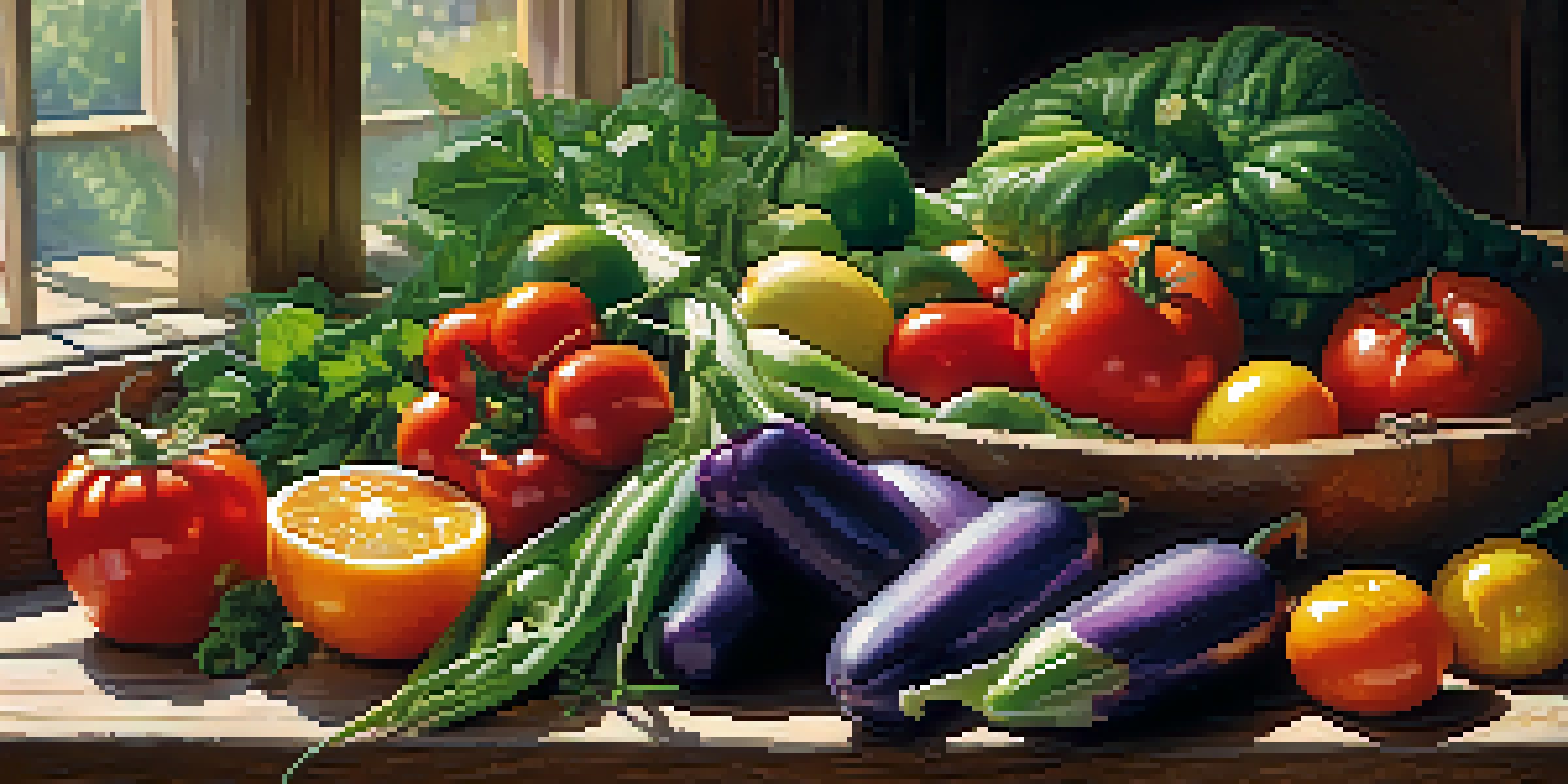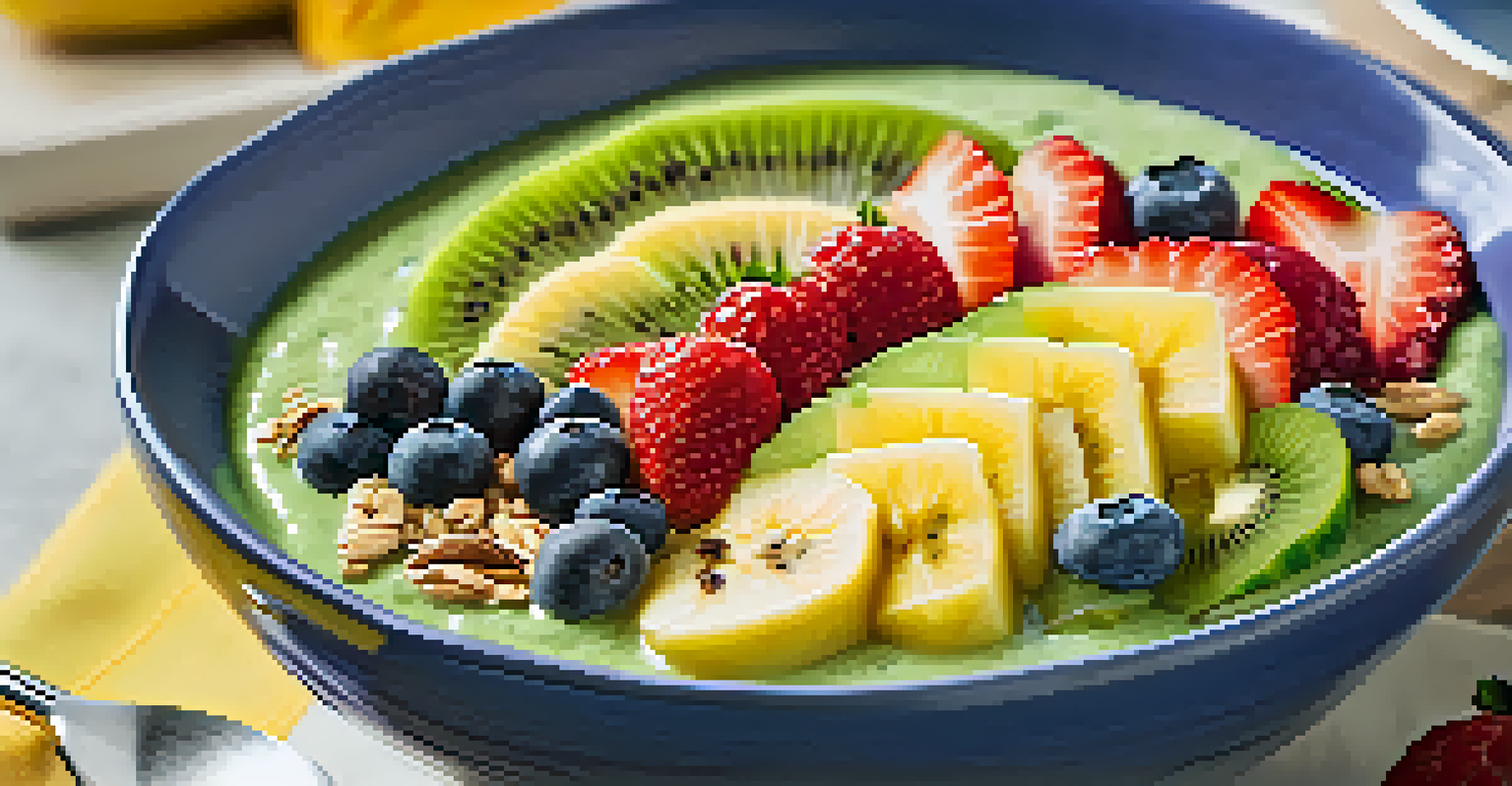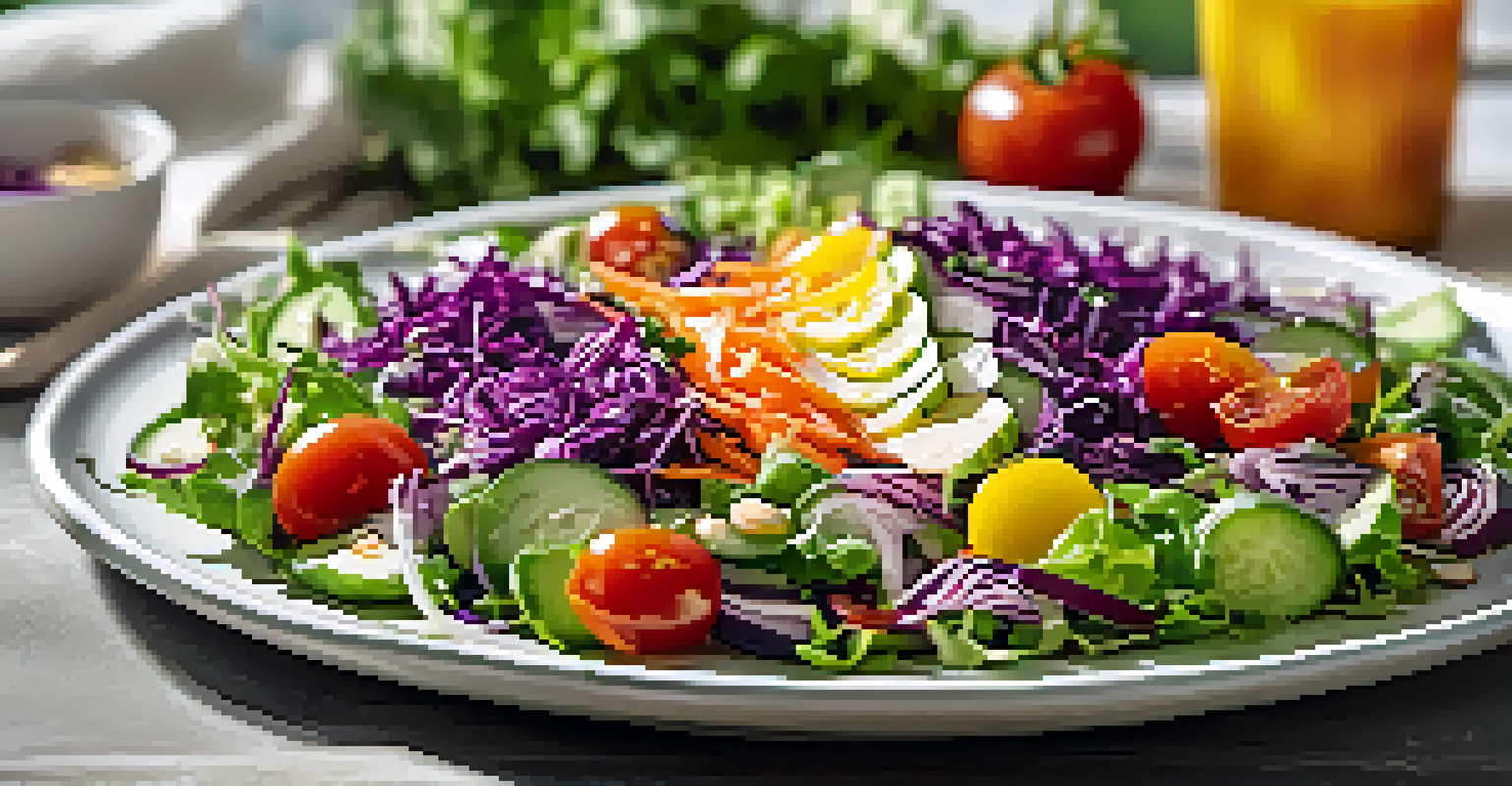Nutritional Benefits of Colorful Fruits and Vegetables

Why Color Matters in Your Diet
The colors of fruits and vegetables are not just for show; they often indicate the variety of nutrients they contain. For instance, bright red tomatoes are rich in lycopene, an antioxidant linked to heart health. Similarly, deeply colored greens like spinach are packed with vitamins A and K, essential for your well-being.
Let food be thy medicine and medicine be thy food.
Eating a colorful diet can lead to a more balanced intake of vitamins and minerals. The more hues on your plate, the wider the range of nutrients you are likely to consume. It’s like a rainbow of health benefits waiting to be explored with each bite.
Moreover, the vibrant colors in fruits and veggies often come from phytonutrients, which have been shown to reduce inflammation and lower the risk of chronic diseases. So, incorporating a variety of colors in your meals is not just visually appealing; it’s a simple strategy to enhance your health.
Red Fruits and Vegetables: Heart Health Heroes
Red fruits and vegetables, such as strawberries, cherries, and red peppers, are packed with antioxidants that support heart health. They contain compounds like anthocyanins and vitamin C, which combat oxidative stress and reduce inflammation. This is particularly important for maintaining a healthy cardiovascular system.

Additionally, red produce can help lower blood pressure and improve circulation. For example, studies have shown that regular consumption of red fruits like watermelon can lead to better blood vessel function. So, including these vibrant foods in your diet can be a delicious way to support your heart.
Colorful Diet Equals Nutritional Balance
A diverse array of fruits and vegetables ensures a wide range of essential vitamins and minerals for overall health.
Don't forget to enjoy them fresh in salads or blended in smoothies. Their natural sweetness can also satisfy your cravings for sweets while delivering a nutritious punch, making it easy to incorporate healthy choices into your lifestyle.
Orange and Yellow Produce: Vision and Immunity Boosters
Orange and yellow fruits and vegetables, like carrots, oranges, and sweet potatoes, are rich in beta-carotene, which the body converts into vitamin A. This nutrient is critical for maintaining healthy vision and a robust immune system. Eating these colorful foods can help keep your eyes sharp and your defenses strong.
Eat the rainbow, not the dirt.
Moreover, foods like bell peppers and mangoes are excellent sources of vitamin C, which plays a vital role in immune function. A strong immune system is your best defense against illnesses, making it essential to incorporate these vibrant options into your meals.
You can enjoy these foods in various ways, from snacking on fresh mango slices to roasting carrots with a drizzle of olive oil. Their sweet and savory flavors can elevate any dish while providing essential nutrients.
Green Fruits and Vegetables: Nature's Nutrient Powerhouses
Green fruits and vegetables, such as kale, broccoli, and green apples, are nutritional powerhouses packed with vitamins, minerals, and fiber. They are particularly high in vitamin K, which is essential for bone health and blood clotting, and folate, crucial for cell division and overall health.
Additionally, greens are often low in calories but high in fiber, making them excellent for digestion and weight management. Incorporating a variety of greens into your diet can help keep you feeling full while providing essential nutrients.
Red Produce Supports Heart Health
Incorporating red fruits and vegetables into your meals can enhance heart health by providing antioxidants that reduce inflammation.
Try adding spinach to your smoothies or enjoying a hearty salad with mixed greens. The versatility of these foods means you can easily find ways to include them in your daily meals without sacrificing flavor.
Blue and Purple Produce: Brain Boosters and Antioxidants
Blue and purple fruits and vegetables, including blueberries, eggplants, and purple cabbage, are known for their high levels of antioxidants. These antioxidants, particularly anthocyanins, have been linked to improved brain health and cognitive function. Incorporating these foods into your diet may help protect against age-related cognitive decline.
Moreover, the rich pigments in blue and purple produce can help reduce the risk of heart disease and certain cancers. For example, studies have indicated that regular consumption of blueberries can improve memory and support heart health due to their beneficial compounds.
These colorful foods can easily be added to smoothies, salads, or even desserts. Their unique flavors and vibrant hues can make your meals more exciting while offering significant health benefits.
White and Brown Produce: Fiber and Nutritional Essentials
Don’t overlook white and brown fruits and vegetables, such as garlic, onions, and mushrooms. These often-underappreciated foods are rich in fiber, which is essential for digestive health. Fiber helps regulate your digestive system, keeps you feeling full, and can aid in weight management.
Additionally, many white and brown foods contain important nutrients like potassium and selenium, which play vital roles in heart health and antioxidant defense. For instance, garlic is known for its potential to lower cholesterol levels and improve heart health.
Eating the Rainbow Boosts Wellness
Enjoying a variety of colorful produce not only makes meals visually appealing but also promotes better nutrition and health.
Incorporating these foods into your meals can be easy and flavorful. Consider using garlic and onions as a base for various dishes or adding mushrooms to stir-fries for added texture and nutritional benefits.
The Importance of Eating the Rainbow
Eating a variety of colorful fruits and vegetables is more than just a trendy motto; it’s a practical approach to nutrition. Each color represents different nutrients and health benefits, so consuming a wide range ensures you get a broad spectrum of vitamins and minerals. It’s a simple way to enhance your diet and overall health.
Moreover, a colorful plate can make meals more enjoyable and visually appealing. When you see a vibrant array of colors, it can stimulate your appetite and encourage healthier choices. Plus, it’s a fun challenge to try new fruits and vegetables in your cooking!

Consider setting a goal to include at least three different colors in each meal. This small change can lead to significant health benefits and help you develop a more varied and nutritious diet in the long run.
Tips for Incorporating More Color into Your Diet
Incorporating more colorful fruits and vegetables into your diet doesn’t have to be complicated. Start by adding a variety of colors to your grocery list each week. By choosing seasonal produce, you can enjoy the freshest flavors while boosting your nutritional intake.
Another great tip is to explore different cooking methods. Roasting, steaming, or grilling can bring out the natural sweetness and flavors of vegetables, making them more appealing. Experiment with new recipes that highlight a specific color or variety to keep things interesting.
Finally, don’t hesitate to get creative with your presentation. A colorful salad, a vibrant stir-fry, or a rainbow smoothie bowl can be both visually stunning and packed with nutrients. Remember, the more colorful your plate, the healthier your meal!